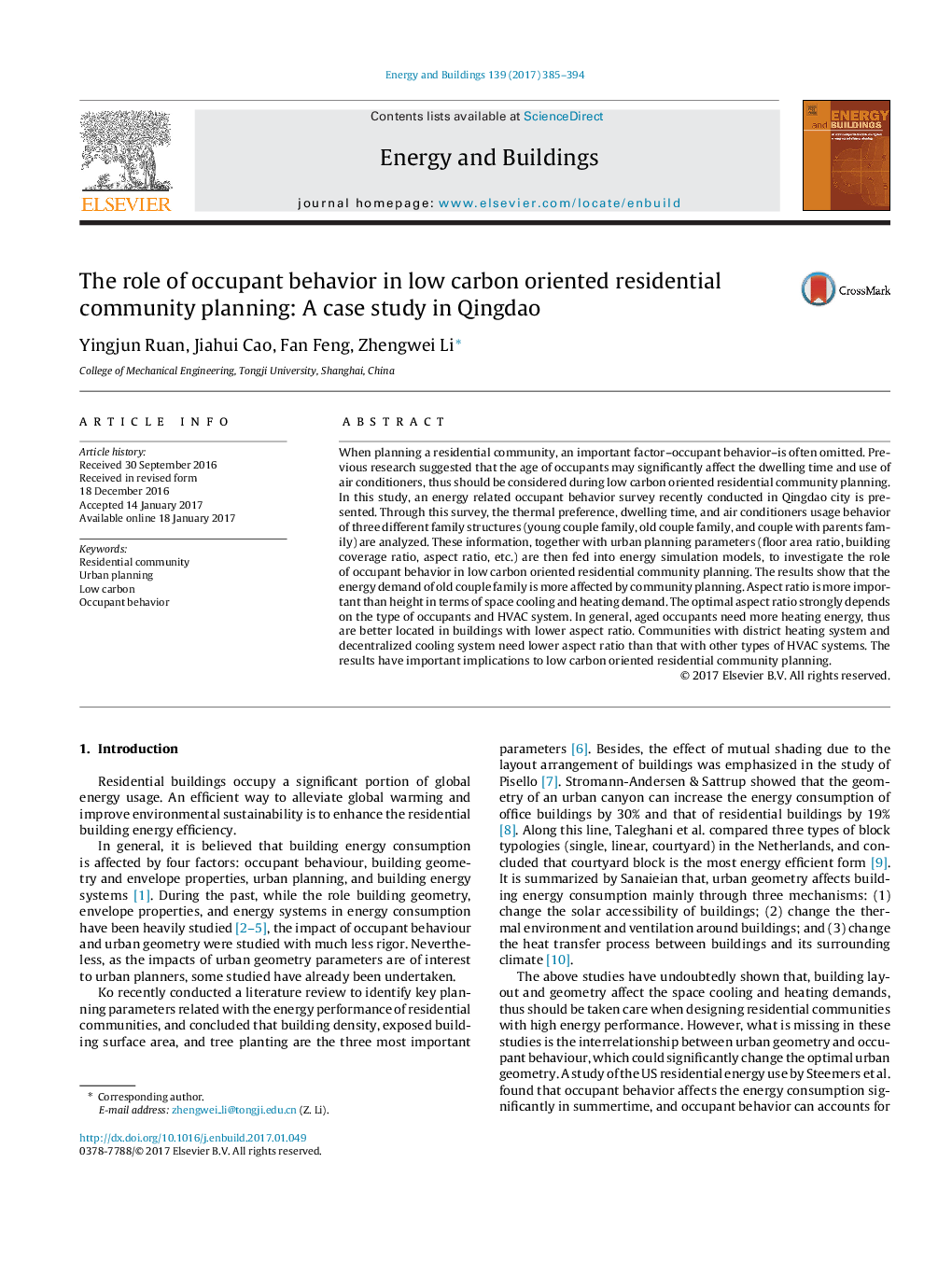| Article ID | Journal | Published Year | Pages | File Type |
|---|---|---|---|---|
| 4919333 | Energy and Buildings | 2017 | 10 Pages |
Abstract
When planning a residential community, an important factor-occupant behavior-is often omitted. Previous research suggested that the age of occupants may significantly affect the dwelling time and use of air conditioners, thus should be considered during low carbon oriented residential community planning. In this study, an energy related occupant behavior survey recently conducted in Qingdao city is presented. Through this survey, the thermal preference, dwelling time, and air conditioners usage behavior of three different family structures (young couple family, old couple family, and couple with parents family) are analyzed. These information, together with urban planning parameters (floor area ratio, building coverage ratio, aspect ratio, etc.) are then fed into energy simulation models, to investigate the role of occupant behavior in low carbon oriented residential community planning. The results show that the energy demand of old couple family is more affected by community planning. Aspect ratio is more important than height in terms of space cooling and heating demand. The optimal aspect ratio strongly depends on the type of occupants and HVAC system. In general, aged occupants need more heating energy, thus are better located in buildings with lower aspect ratio. Communities with district heating system and decentralized cooling system need lower aspect ratio than that with other types of HVAC systems. The results have important implications to low carbon oriented residential community planning.
Related Topics
Physical Sciences and Engineering
Energy
Renewable Energy, Sustainability and the Environment
Authors
Yingjun Ruan, Jiahui Cao, Fan Feng, Zhengwei Li,
